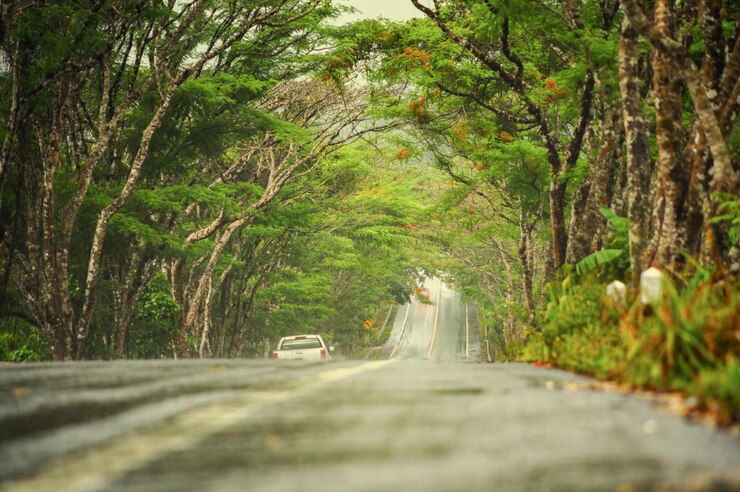Dehradun-Delhi Expressway is a shining example of how infrastructure development can align with environmental conservation. Designed to connect the bustling city of Delhi with the serene valleys of Dehradun, this expressway prioritizes wildlife protection alongside modern travel conveniences. Through innovative measures like eco-friendly lighting and dedicated wildlife crossings, it sets a benchmark for sustainable infrastructure.
Project Overview
Spanning approximately 210 kilometers, the Dehradun-Delhi Expressway is a state-of-the-art roadway designed to reduce travel time between the two cities to under 2.5 hours. Which was previously around 6.5 hours.
Key Features:
- A four-lane highway with provisions for expansion.
- Smart traffic management systems for seamless travel.
- Toll systems integrated with advanced payment options.
Investment and Timeline:
- The project is estimated to cost ₹12,000 crore.
- Expected completion: December 2025.
This expressway is part of the Bharatmala Pariyojana, the government’s ambitious initiative to enhance India’s road infrastructure.
Wildlife Protection Measures
Recognizing the ecological significance of the route, which traverses sensitive zones like the Rajaji National Park, the project includes robust measures to safeguard local wildlife. NHAI is trying to go through guidelines of Wildlife Institute of India:
Animal-Friendly Lighting: The expressway incorporates low-intensity, wildlife-friendly lighting systems to minimize disturbances to nocturnal animals. These lights will be designed with color temperature and light rays to avoid disrupting animal behaviour. These lights will also be adjusted to such an angle so that light can only be confined to highways only.
Noise – Barriers: noise barriers will be installed on elevated parts of the road made of rockwool between aluminium sheets to absorb sounds beyond standard levels. Which will save wild animals from the sounds of different vehicles.
Dedicated Wildlife Crossings:
- Construction of overpasses and underpasses designed exclusively for animal movement.
- These crossings ensure that animals like elephants, tigers, and leopards can safely navigate the region without risking collisions.
The adoption of these measures demonstrates a forward-thinking approach to infrastructure that prioritizes ecological balance.
Benefits of the Expressway
The Dehradun-Delhi Expressway offers numerous benefits, both for travelers and the surrounding regions:
Travel Efficiency:
- Reduces travel time from over 6 hours to just 2.5 hours.
- Ensures smoother transit through advanced road quality and technology.
Regional Development:
- Boosts connectivity for Uttarakhand’s tourism sector.
- Encourages trade and economic growth in nearby towns and cities.
- Enhances access to Uttarakhand’s eco-tourism hotspots while maintaining biodiversity.
Challenges and Future Considerations
While the expressway sets a high standard for sustainable infrastructure, it also presents certain challenges:
- Environmental Concerns: Continuous monitoring will be essential to assess the impact of the expressway on local flora and fauna.
- Maintenance of Wildlife Crossings: Ensuring that underpasses and overpasses remain effective will require regular inspections and upgrades.
- Scaling Innovations: These wildlife protection measures could serve as a blueprint for future projects across India, requiring tailored strategies for different ecological zones.
Conclusion
The Dehradun-Delhi Expressway exemplifies how infrastructure projects can harmonize with environmental conservation. By integrating wildlife-friendly solutions into its design, it provides a roadmap for sustainable development. As India expands its road network, this project serves as a testament to the possibilities of balancing progress with preservation.
